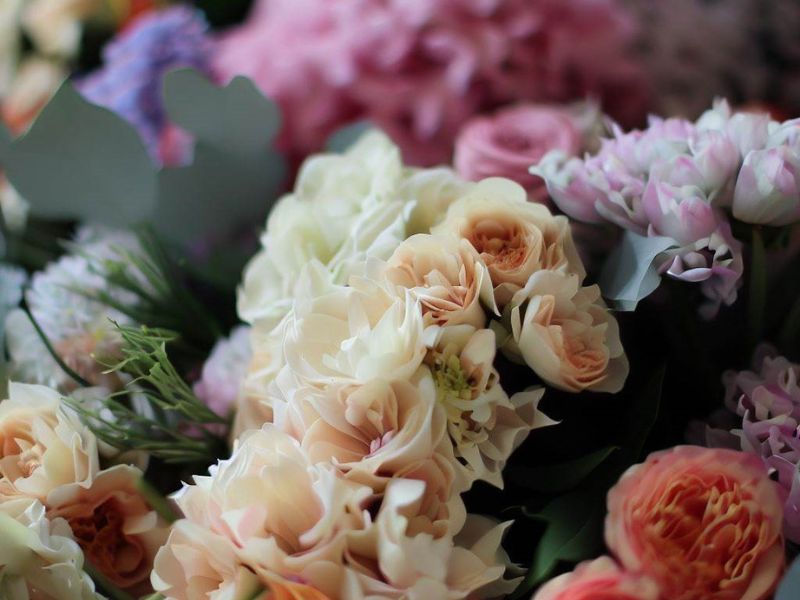Introduction
Throughout history, flowers have been used to convey emotions and messages that words alone cannot express. Known as floriography, the language of flowers has been a part of human culture for centuries. From the elaborate floral arrangements of the Victorian era to the simple bouquets exchanged by loved ones today, flowers continue to play a significant role in human communication. In this article, we’ll delve into the fascinating world of flower symbolism and discover the meanings behind some of the most popular blooms that you can order via same day flower delivery Sacramento.
Rose
Roses are perhaps the most well-known flower when it comes to symbolism. The color of the rose plays a significant role in its meaning, with red roses symbolizing love and passion, pink roses representing admiration and appreciation, and white roses signifying purity and innocence. Yellow roses, on the other hand, symbolize friendship and joy. Interestingly, the ancient Greeks believed that roses were originally white and turned red when the goddess of love, Aphrodite, pricked herself on their thorns, infusing them with her divine essence.
Tulip
Tulips are another popular flower with rich symbolism. They are generally associated with perfect love, but different colors carry specific meanings. Red tulips signify true love, while yellow tulips symbolize cheerful thoughts and sunshine. Purple tulips represent royalty, and white tulips convey forgiveness. The tulip’s origin can be traced back to the Ottoman Empire, where it was highly prized for its beauty and became a symbol of wealth and status, even inspiring a period of “tulip mania” in the Netherlands during the 17th century.
Lily
Lilies are elegant flowers that have been revered across cultures for their beauty and fragrance. White lilies symbolize purity and modesty, while pink lilies represent prosperity and abundance. Orange lilies symbolize passion, and calla lilies stand for beauty. In ancient Greece, lilies were associated with the goddess Hera, and they were used in various religious ceremonies and rituals, signifying the divine and spiritual aspects of life.
Orchid
Orchids are exotic flowers that represent love, beauty, and strength. They are often given as a symbol of delicate, rare beauty and can also represent luxury and refinement. The orchid’s name comes from the Greek word “orchis,” which means “testicle,” due to the shape of the plant’s tubers. This association led to the belief that orchids had aphrodisiac properties in ancient Greek culture, further enhancing their allure and mystique.
Sunflower
Sunflowers are known for their cheerful appearance and the way they follow the sun throughout the day, a phenomenon known as heliotropism. They symbolize adoration, loyalty, and longevity, making them a popular choice for celebrating long-lasting relationships. Sunflowers were first cultivated by Native Americans, who used the seeds for food, oil, and dye, and the plant itself was seen as a symbol of spiritual guidance and healing, reflecting the sun’s life-giving energy.
Daisy
Daisies are simple yet charming flowers that symbolize innocence, purity, and true love. They are often given as a symbol of new beginnings and can also represent loyal love and commitment. The name “daisy” comes from the Old English “daes eage,” meaning “day’s eye,” because the flower opens at dawn and closes at dusk, reflecting the sun’s journey through the sky and symbolizing the cycle of life and renewal.
Peony
Peonies are lush, fragrant flowers that symbolize romance, prosperity, and good fortune. They are often used in wedding bouquets to represent a happy marriage and are considered an omen of good luck. In Chinese culture, peonies are highly valued and are known as the “king of flowers,” symbolizing wealth, honor, and nobility. Peonies have also been used in traditional Chinese medicine for their various healing properties.
Interesting Facts
During the Victorian era, people used floriography to send coded messages to one another using flowers, creating intricate arrangements that conveyed complex emotions and intentions.
Ancient Greeks believed that lilies sprouted from the milk of Hera, the queen of the gods, symbolizing the connection between the divine and the natural world.
Conclusion
The language of flowers is a fascinating and subtle way to communicate emotions and messages. By understanding the meanings behind different blooms, we can use them to express our feelings and sentiments in a unique and beautiful way. As we continue to appreciate the natural beauty and symbolism of flowers, we deepen our connection to the world around us and the rich history of human communication through these captivating gifts from nature. From love and friendship to healing and forgiveness, flowers truly speak a language that transcends time and culture, reminding us of the power and significance of these seemingly simple yet profound creations.
